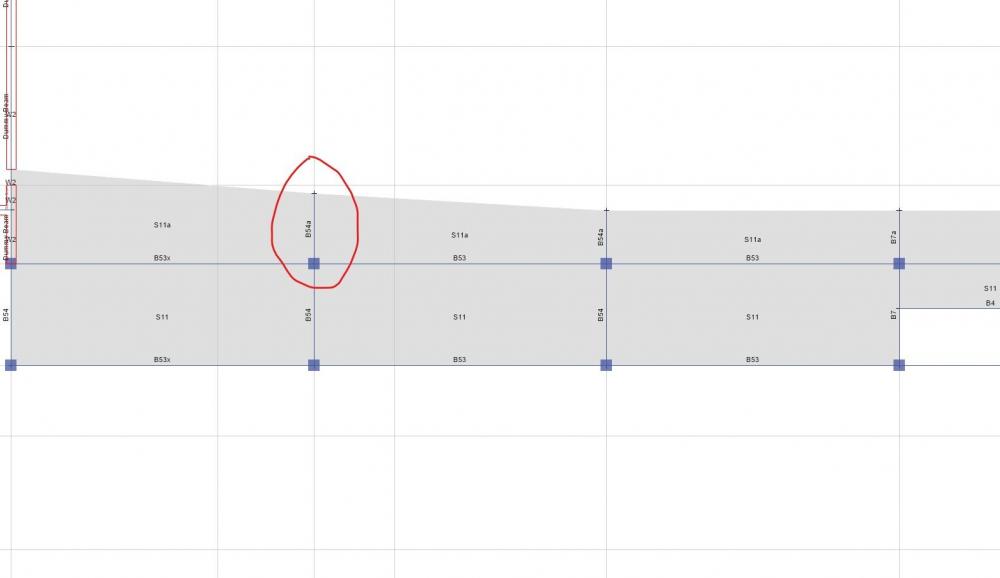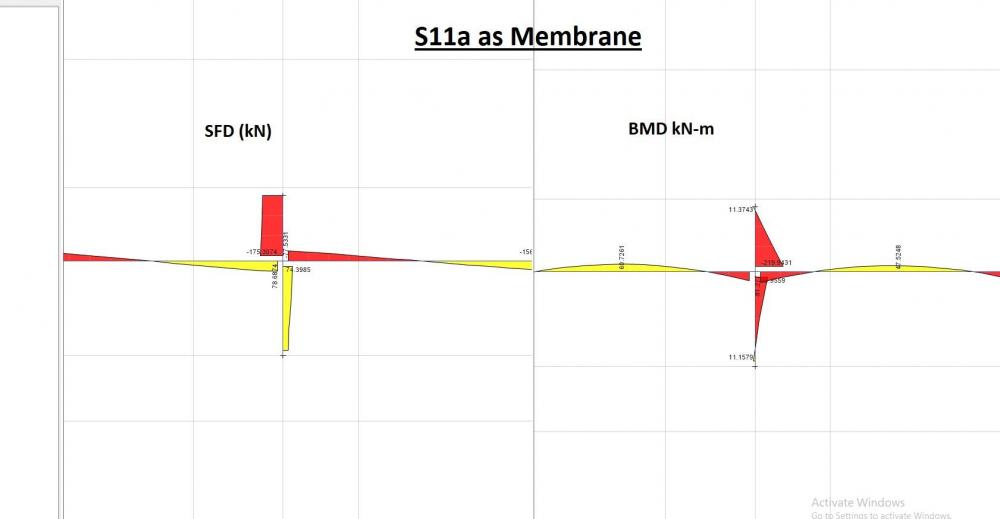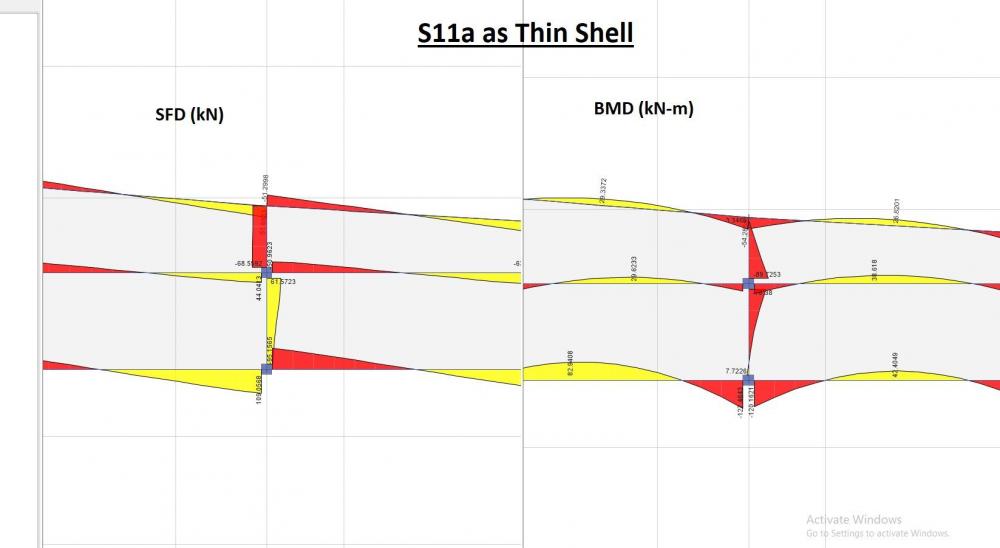Search the Community
Showing results for tags 'Shell'.
-
I am trying modelling a simply supported plate model in with 10×10 mesh with density 25 Knm2 and E2510^6 and comparing it with results of other finite element applications and also with numerical matrix analysis by hand calculations. Both fem app and hand calculations results match but those of csi bridge and staad pro doesn't though they matched with each other. I was sure of correct modelling and also checked for equilibrium each time, I tried models of other dimensions l b and h as well. Each time fem results and hand calculations matched perfectly. For example I tried modeling 35×50 m plate with 2m depth. Hand and fem calculation results were 30 and 33 mm at centre resp. But csi bridge and staad pro for same parameters gives 230mm. For other models also the result are far too variable like this case only. Please I need urgent support. Any reference would be appreciated. Also how come two fem applications give these absurd results for exact same parameters?
-
Young engineers often ask about whether to select membrane or thin shell or thick shell for modelling area elements such as RCC slab. I am going to talk about the difference in the results when choosing thin-shell or membrane. This is what makers of ETABS says about the topic. I will quote the following to clear out the structural difference between the two: "Load which is applied to membrane objects transfers directly to supporting structural objects, whereas meshed shell objects have bending stiffness and therefore resist a portion of the load through flexural deformation. As a result, less load will be available to transfer to beams located under a shell, while 100% of the load will transfer through a membrane". Lets see how much can the results differ. Figure below shows the partial framing plan of a level in the building I will discuss how the modelling of S11a as thin-shell or membrane will effect the design shear and moment on the beam B54a, see figure above. The figure below shows the design forces obtained against the gravity loads for the membrane case: The figure below shows the design forces obtained against the gravity loads for the thin-shell case: Based on the results presented above, B54a's design shear increased by 155%, and its design moment by 147% as compared to S11a's behavior as membrane. Now the question, that a Structural engineer needs to ask is: Which result is more appropriate or which result captures the actual behavior more realistically? And that is where you engineering judgement comes into play.
-
I have modelled a roof of a guard room comprising of folded plates having irregular geometry. For meshing I used Automesh option & further sub-divided it in 12inch size mesh. But, after viewing the results it was evident that the mesh in different panel was not properly connected. Does that effect the results after analyzing? Also how should I assign strips for getting the design of the folded plate from etabs? Please, share a model having folded plates in it & what is the proper way to mesh such elements? The model is attached herewith for your kind perusal. Please fix the model & share it with me. G.R.EDB Guard.Room.EDB
-
When i use Membrane for slab my Manual calculations matches with ETABS and when use Shell thin ETABS gives very small Moment As compared to manual, Can someone explain why,?
-
Respected engineers! in Etabs while defining slab it asks to select shell, plate and membrane. what is the diffrence between them and when and in which type of slabs we will use these?
-
Assalam o alaikum, In Etabs, How to interperate Shell stresses/Forces. I highlighted M22 Force and i got max value as 2.61 in kip-ft units and minimum as -5.112 in Kip-ft units. What i found from the link http://docs.csiamerica.com/help-files/etabs/Menus/Display/Show_Member_Force_and_Stress_Diagrams/Shell_Forces_Stresses_Form.htm that M22: Direct moment per unit length acting at the mid-surface of the element on the positive and negative 2 faces about the 1-axis. Does it mean -5.112 Kip-ft/ft and is M22 the moment for which i am to calculate vertical steel. Kindly suggest me the value of Mu for which i am to design reinforcement. I have also attached Picture.
- 6 replies
-
- shell
- shell stresses
-
(and 2 more)
Tagged with:
-
Aslamualikum: I want to ask that, in ETABs, when we define slab, I put slab thickness same in MEMBRANE & BENDING, is it right or wrong? and what is difference b/w shell,membrane,plate and thick plate? and how and when we use these ? read out help topic in ETABs. But i could not understand.. Can anybody explain me in bit simplest way.?









.thumb.jpg.700916fbc7ead330085e15745d0270bd.jpg)
